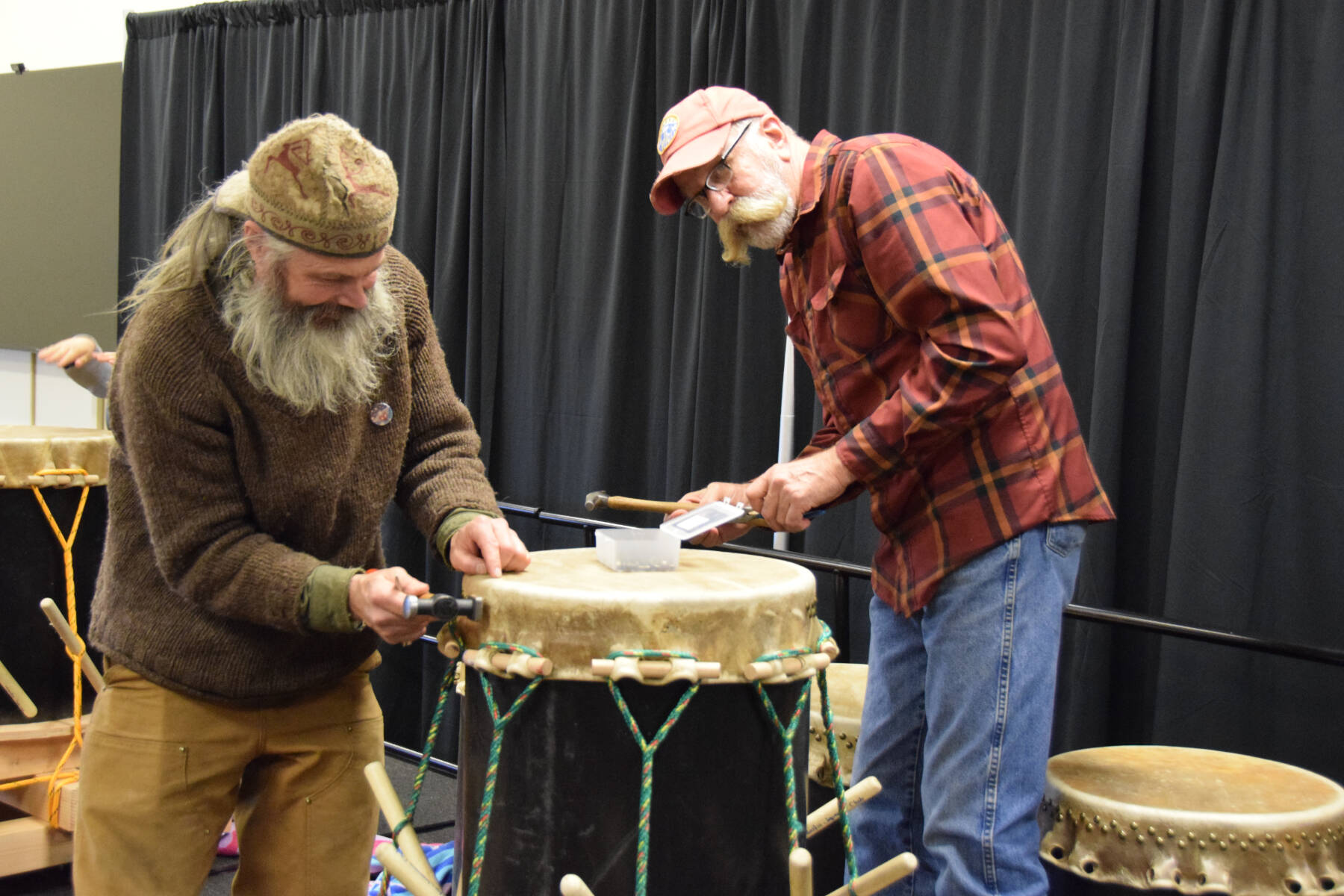Homer’s 40th anniversary sister city celebrations got off to a banging start last weekend with a workshop hosted at Kachemak Bay Campus, in which community members participated in taiko drum craftsmanship on Friday, May 3.
The Japanese word “taiko” translates literally to “drum,” though the term also refers to a Japanese drumming style, a drum group, drum music or the drum itself. Taiko drums are a traditional Japanese percussion instrument that have historically been used in Japanese culture for centuries, from the military arena to theater to the Japanese imperial court.
Taiko drumming as an ensemble performance, or kumi-daiko, was created in Japan in 1951 by a jazz drummer named Daihachi Oguchi. The art was later introduced to North America in 1968, when Grandmaster Seiichi Tanaka created the San Francisco Taiko dojo.
Tomodachi Daiko Inc., an Anchorage-based taiko group which was founded in 2000, visited Homer over the weekend and brought with them three completed taiko drums, which they donated to the city, as well as materials for building three more drums. Frank Jeffries, who has been part of Tomodachi Daiko since 2005, led the workshop.
“Taiko drumming is sort of a vice,” he said at the start of Friday’s event. “Once you start doing it and you enjoy it, then you play for people and they get all excited, it snowballs. My goal in coming down here is to teach you how to build drums so that you can create for yourself, without any assistance from anybody, a finished product as a playable instrument.”
Although they are typically carved from a single log or, in order to make taiko more affordable and accessible, built from wine barrels or similar materials, Jeffries instead used 2-foot sections of PVC pipe with the edges rounded off to avoid damaging the skin that is stretched over the top. The base materials were donated by Homer’s Alaska Japanese Club, while the other materials for the drums were donated by Jeffries and his wife, Jacki Holzman.
Tomodachi Daiko also donated several pairs of bachi, or wooden drumsticks, to be used with the new drums.
“The reason why I started building drums is because you couldn’t buy a wooden drum for less than $6,000 when I built my first one, so I built five wooden drums out of oak wine barrels,” Jeffries said. “It’s not cheap.”
On Friday, Jeffries walked workshop attendees, including Alaska Japanese Club students and other Homer community members, through the various stages of putting together the three unbuilt drums. He’d come prepared with three steerhide skins, one of which was still dried, one of which had been soaked so as to be pliable for forming, and one which was pre-formed so participants could fit it over the drum, stretch it and tack it on.
Workshop attendees broke into small groups according to which task they were interested in partaking, often taking turns switching between tasks so everyone got a little hands-on experience with most of the stages of building the drums.
One group took the dried skin out onto the balcony outside KBC’s Pioneer Hall and carefully drilled 64 pre-marked holes around the whole edge, into which dowels would later be fit to help the skin achieve its necessary form. This skin would later need to be soaked for about 12-16 hours before the dowels were inserted and it could be fit onto the drum.
Another group took the prepared, pliable skin and did what Jeffries called a “pre-stretch,” where they inserted dowels through the drilled holes and stretched and formed the skin into the shape necessary to later fit over the drum.
Other workshop attendees worked to complete a taiko drum by fitting the final, pre-formed skin over it and stretching it. This was done by wrapping more than 50 feet of rope around the dowels that had been left in the skin and a prefabricated wooden base on which the drum itself sat. This created tension, temporarily securing the skin to the drum base and helping it to stretch in order to achieve the proper tone for playing as an instrument.
Alaska Japanese Club students especially enjoyed the next part, where they jumped on top of the skin in order to stretch it even further.
After Jeffries ensured that the skin had been stretched enough, to the point that the drum would sound the appropriate pitch when played, he set workshop attendees to tacking the skin to the base. The skin was then set to dry for three days, before the ropes could be removed and the drum would be ready for use.
The three drums that Jeffries had built before the workshop were used during the drumming performance workshop held in the Homer High School Mariner Theatre on Saturday, May 4.
For more information on last weekend’s sister city celebrations with Tomodachi Daiko, visit www.cityofhomer-ak.gov/citymanager/sister-city-events.


